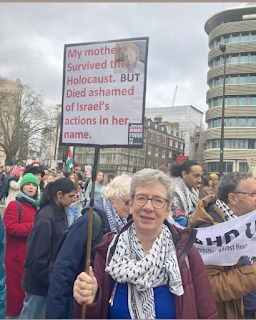The Message - Important Words!
Ta-Nehisi
Coates’ The Message is a book well worth reading. Coates is a poet and storyteller, as well as
journalist, a teacher, and a student.
This book exposed and deepened my knowledge and general insights related
to Israel and racism, and much more.
While little was particularly new, so much wisdom showed itself through -
most deeply.
Early in the
book the mood of the book is exposed with things such as (referring to Jack
Tatum’s jarring, paralyzing hit of Darryl Stingley), Coates stated:
Even
Tatum’s story spoke volumes by not speaking much at all, for it nodded to the
shame one might feel or the paradox of a game that valorizes violence and then
is horrified by its consequences. … What
I felt then was that the story of Darryl Stingley broke some invisible law of
justice, one that reigned in all of my cartoons. I knew that football was violent – it was the
violence that backlit Tony Dorsett’s escape act. But violence was the antagonist in a story
with a happy ending. It could never win,
could it? (p.10)
The
Message shares
Coates tale of his learning how he had bought into the dominant narratives of
the principled, “just Israel”. As he
increasingly saw the horrors and hypocrisies of Israel, and the intersection of
the U.S. Government’s huge role, I, a reader, clearly heard the ties between
racism, colonialism and much, much more.
In the
1930s when the Nazis sought precedent for their battery of antisemitic laws,
they found it in America – the world’s “leading racist jurisdiction” writes
historian James Q. Whitman. The
relatively small presence of Black people proved no barrier for Nazis. Hitler “saw the entire world as an Africa”
writes historian Timothy Snyder. “And
everyone, including Europeans, in racial terms.” Ukrainians and Poles were derided as “blacks”. Slavs were said to fight “like Indians”. And the Germans imagined themselves as heroic
colonizers, “tamers of distant lands,” writes Snyder. (p.182)
Coates pushes
and pulls us out of our comfort zones in a variety of ways. It is challenging to remain within our “American
Exceptionalism” and/or our imaginary world of so many “goods” and “bads”, as
most of us have been taught through our schools, government and media.
Ta-Nehisi
Coates visited and talks substantially of the “City of David”, essentially a created
site for tourists, based loosely upon archeological digs. He tears apart the selective use of “archaeology”. In doing this he also references the extremely
biased narrative of Leon Uris’s writings, cheering on the new vision of the
Israeli (Jew) as an active “tough guy”, no longer the “wimp” (my words, not
Coates’)
I was in
the land that Uris so adored, where the New Jew “spits in the eye of the Arab
hordes.” But the very violence and force
that emanated even from the City of David spoke to the disquiet and fear that
resided somewhere deep inside Israel.
The state doth protest too much.
(p.193-4)
Coates digs
into the ties of Racism with Palestine significantly related to
journalism.
Through a
fifty-year period stretching from 1970 to 2019, Nasser found that less than 2 percent of all
opinion pieces discussing Palestinians had Palestinian authors. The Washington Post ranked at a dismal 1
percent. The New Republic during this
period did not publish a single piece on Palestine from the perspective of
Palestinians. (p.230)
In
concluding this review, I want to share a final quote, that gets to the heart
of Coates’ perspective:
And in
the case of the City of David, it also allows for flooding your neighborhood
with tourists hopped up on tales of religious jingoism, primed to re-aim, Alon
explained, was to create a “correlation between Jewish heritage and ownership”
and to birth a complete Jewish rule over Eretz Israel. As I stood there watching the worshippers,
Alon pointed to what appeared to be the ruins of an ancient wall. Standing there amid all that remained of the
Moroccan Quarter, amid a lost world, I felt a mix of astonishment, betrayal,
and anger. The astonishment was for me –
for my own ignorance, for my own incuriosity, for the limits of my sense of
reparations. The betrayal was for my
colleagues in journalism – betrayal for the way they reported, for the way they’d
laundered open discrimination, for the voices they’d erased. And the anger was for my own past – for Black
Bottom, for Rosewood, for Tulsa – which I could not help but feel being evoked
her. (p.199)



Comments
Post a Comment